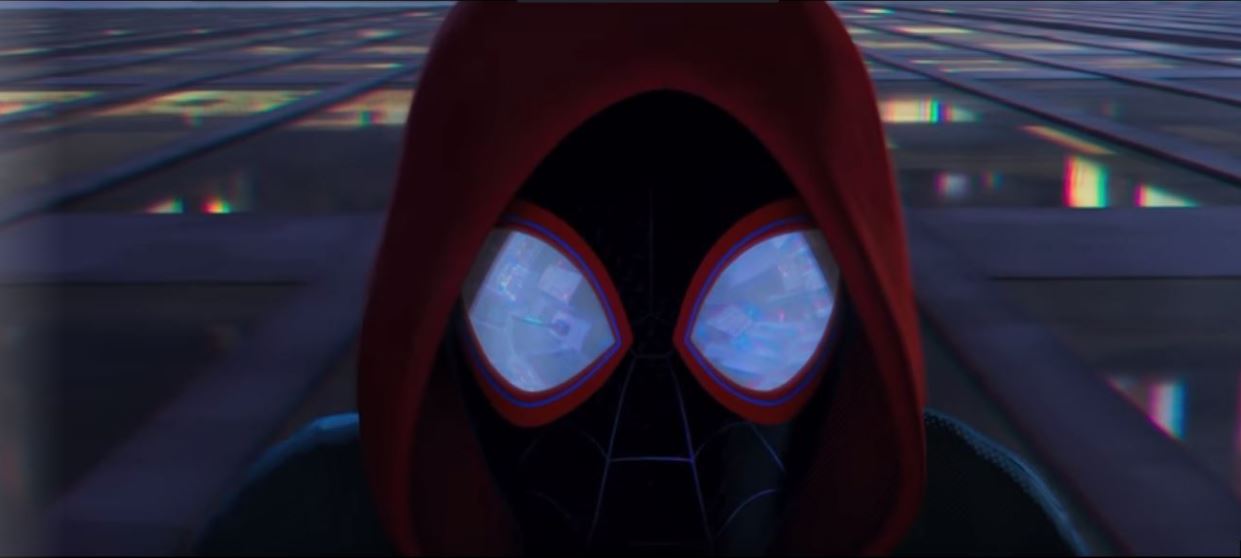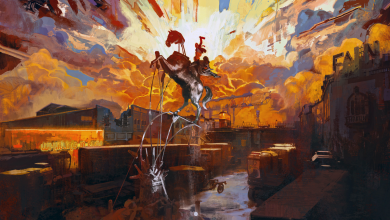‘Spider-Man: Into the Spider-Verse’ Proves There Are No Barriers to Becoming a Hero

Image courtesy of YouTube./ CC BY-NC 2.0.
(This article contains spoilers for the film “Spider-Man: Into the Spider-Verse.”)
For many years, Spider-Man has consistently ranked as one of the most famous superheroes in popular culture. Spider-Man content pervades the mainstream year after year. 2018 especially featured many non-comic appearances from the web-slinger with the movie “Avengers: Infinity War,” the video game “Marvel’s Spider-Man,” and lastly the animated Golden Globe-winning film “Spider-Man: Into the Spider-Verse.” And, aside from “Spider-Man: Into the Spider-Verse” having Miles Morales as the main character, the vast majority of Spider-Man coverage presents Peter Parker as the only Spider-Man, despite the huge quantity of different manifestations of Spider-Man from alternate universes across Marvel Comics.
There’s nothing fundamentally wrong with Peter Parker being the main Spider-Man in any piece of media. He is the first one after all, created in 1962 by Stan Lee and Steve Ditko. He helped Spider-Man become the everyman of superheroes by showing that, no matter what background someone has, anyone can be a hero. Because of Peter’s working-class origin, Spider-Man is relatable to the common person, not rich like Batman and Iron Man or inherently powerful and great like Superman and Thor. He gains his powers entirely through random chance, so anyone could have become Spider-Man; it didn’t need to be Peter. In spite of this inspiring “everyman” message, however, Peter Parker still stands as the primary and most accepted Spider-Man, with other iterations receiving less popularity and approval.
The most famous case of resistance to a new version of Spider-Man was the introduction of Miles Morales to Spider-Man comics in 2011. Miles, as the first Afro-Latino Spider-Man, received considerable hate when first created. A good deal of this backlash, including some from conservative commentator Glenn Beck, was centered around racism over Miles being Black and mocked the decision for being too “politically correct.”
Some argue that people simply don’t want anyone other than Peter Parker to be Spider-Man. This line of thinking doesn’t hold up though when considering how alternate iterations of Spider-Man have existed long before and after Miles Morales was created, including all the versions that show up in “Spider-Man: Into the Spider-Verse.” Spider-Ham and Spider-Man Noir, for example, made their comic debuts in 1983 and 2009 respectively. Female characters like Gwen Stacy as Spider-Woman and Peni Parker as SP//dr both took on the role in 2014. And while Miles is the first Black Spider-Man, he is not the first Latino one; Miguel O’Hara, known as Spider-Man 2099, holds this title and was introduced back in 1992.
So, Peter Parker was not and continues to not be the only Spider-Man in existence in Marvel Comics. As shown previously, Spider-Man is not an identity tied to a specific race, ethnicity, gender, or even species with Spider-Ham. Therefore, when people cling to Peter Parker and claim there is no room for another Spider-Man, they are truly saying that Spider-Man must be white and never a person of color, especially not Black in Miles’ case. They want to limit the definition of ‘Spider-Man’ to exclude those who do not fall into the categories of cisgender, white, heterosexual, and male – an idea supported by Marvel, Sony Pictures, and Stan Lee. These restrictions, however, go completely against the everyman quality Spider-Man is meant to portray.
“Spider-Man: Into the Spider-Verse” seemingly aims to represent this idea that anyone can be Spider-Man while also serving as a subtle metacommentary on all the mistreatment Miles Morales has received as a character. The film starts with narration from Peter Parker’s version of Spider-Man in Miles’ universe. He speaks as if he is the main hero of the story and states that he is the one and only Spider-Man. Right after this, the narrative immediately shifts to Miles and makes him the central protagonist for the rest of the film. Several different versions of Spider-Man — Peter B. Parker (a Peter Parker whose life has fallen apart), Gwen Stacy, Peni Parker, Spider Man Noir, and Spider-Ham — enter the story at some point, but none ever wrestle narrative control away from Miles. Despite their presence, this is Miles’ story, first and foremost.
The movie also serves as Miles’ origin story and shows how he becomes Spider-Man. Many times throughout the film, characters try to control his actions and his future. His father pushes him to attend a school he doesn’t feel comfortable in. Soon after Miles gains his powers, Peter B. Parker attempts to keep him out of the action and is frustrated when he has difficulty unsticking himself from the ceiling, something Miles does only when he relaxes in his own particular way: singing along to the song “Sunflower.” And when all the different manifestations of Spider-Man in this film finally come together at Aunt May’s house, they try to pressure and force Miles into being heroes exactly like them. They want him to be Spider-Man in the same way they are instead of letting him be a unique individual. This seems to reflect all the backlash Miles faced as a character – immediately judged and not allowed to become his own character separate from Peter Parker.
Miles only fully realizes his identity as Spider-Man when his father reassures him that he will be proud of him no matter what he does and that he has always believed that Miles has a great spark inside him. He also defeats the main villain Wilson Fisk only when he uses a move he learned from his recently deceased uncle Aaron. By having Miles’ empowerment emerge when he embodies the lessons he’s learned from his Black role models and takes pride in his familia, the film honors Miles’ Afro-Latino heritage and shows that his identity is not a weakness or hindrance to him being Spider-Man but a strength.
Through Miles Morales and every other iteration of Spider-Man in this movie, “Spider-Man: Into the Spider-Verse” proves that there is no definitive answer to the question, “Who is Spider-Man?” There is no limit to who can be the web-slinger, no matter their identity. Peter Parker is a great Spider-Man, but he isn’t the only great or valid one. If more non-comic mediums beyond this film gave characters like Miles the chance to shine as main characters, maybe this central message about Spider-Man and heroes in general could finally be realized. Maybe we could even get a live-action movie starring Miles in the future, even if this does seem less likely considering how 2017’s “Spider-Man: Homecoming” seemed to take several elements from Miles’ comic origin and give them to Tom Holland’s Peter Parker. At this point, I can only hope that “Spider-Man: Into the Spider-Verse” finds success and stands as a symbol for how there is no one archetype, standard, or identity that defines who can be a hero.




